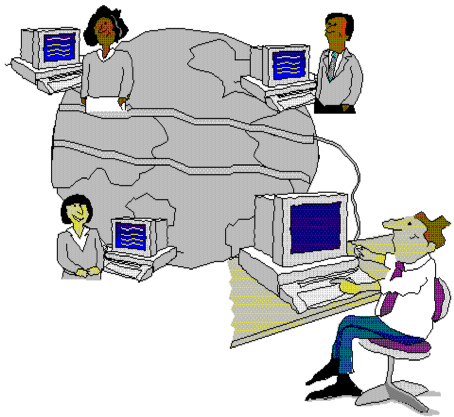
The Welcome Widget Company plans to announce a new product tomorrow. However, one serious problem has occurred, and the development group has worked late into the night to solve it. The Director of Product Assurance must make a "GO/NO-GO" decision by the end of the day. Fortunately, the test result are good, so the director makes a GO decision by signing the announcement approval sheet just before midnight. He wishes to notify the other 6 Directors and the Chairman of the Board of his position, but worries that no one is in the division offices at this late hour. Finally, he uses a telephone to input a voice message to the Salutation Enabled Message Service detailing his "concur" position and indicating that messages should be sent to the divisional distribution list on an urgent basis. The Salutation Enabled Message Service 'locates' each of the Directors, and sends notification of an urgent message.

All Division Directors (or their agents) acknowledge the receipt of the message.
The Salutation Enabled Message Service is a message clearing house that can accept messages from 'anything' and distribute them 'anywhere'. The heart of the service is a Salutation Manager, plus access to transformation services distributed around the network. The Salutation Manager is used to understand the capabilities of the sending and receiving devices. The transforms are used to convert the message into the appropriate form and format for the receiver.
The Directors have logged into the Message Service earlier using their desired receiving device, indicating their preference for message notification. The Salutation Enabled Message Service uses Salutation Protocol to determine the capabilities of each of the accessing devices, and logs this information into it's internal address book. This creates address book records for each of the Directors, indicating the technique used to communicate with them, and the characteristics of the communication device they desire to use.
When a message arrives, the Salutation Enabled Message Service determines the form and format for notification using these updated address book entries. Each of the Division Directors receives notification of an urgent messages per the specified technique, and retrieves the message through the best available means.
Although the Directors have indicated their preference for receiving notification, they may access the message through a different device. The Salutation Enabled Message Service will again uses Salutation Protocol to determine the capabilities of the device and format the data accordingly. As necessary, the Salutation Enabled Message Service may use Salutation Manager to locate a distributed transformation service, and pass the data to be transformed to the responding service.